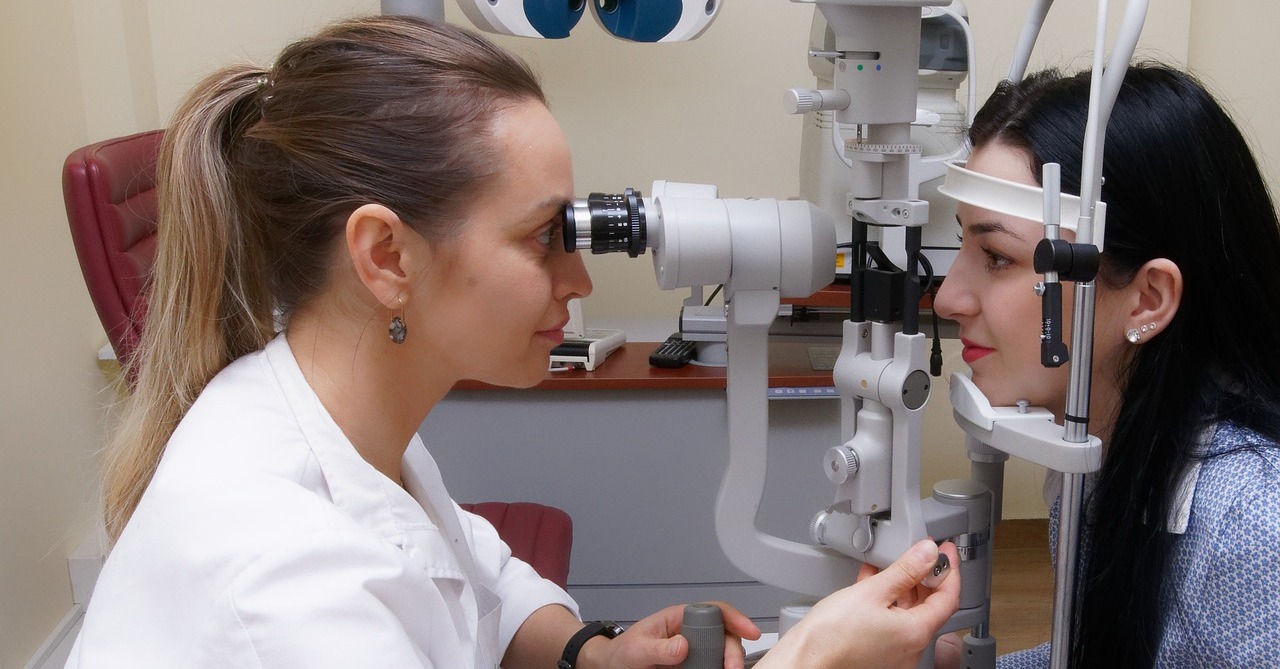
Why Become a Cornea and Contact Lens Optometrist?
Cornea and contact lens optometrists are highly educated practitioners; they [...]

Earning a Doctor of Optometry degree requires four years of intensive education and a lot of hard work. The financial commitment is equally significant; most optometry students take six-figure student loans to finance their education. Obviously, optometry school is not a choice one makes casually.
As you consider your options, you’ll want to carefully and methodically identify the pros and cons of various programs, consult with students and alumni, and try to determine how employers regard graduates. Fortunately, your choices are limited: the United States and its territories currently offer only 24 accredited optometry programs in 19 states and territories. Unfortunately, that means competition for admission is stiff.
How to choose an optometry program that’s right for you? This article recommends five factors to consider to feel confident knowing you’re making an informed decision. It also discusses a new opportunity to pursue this degree remotely.
Selecting a Doctor of Optometry (OD) program comes down to individual interests, motivations, undergraduate transcripts, location, and available specializations, meaning the choice looks different for every applicant. Some students want to attend the program ranked most prestigious with high GPA requirements; others prioritize being close to family and friends. Understanding your motivations is one of the first and most important steps to take in the selection process, as it will help you narrow options and create a list of top schools. Many factors motivate learners when choosing an optometry program; we look at some of the most common ones below.
Students concerned about standardized tests may decide on a program that does not require Optometry Admission Test (OAT) scores; several schools have dropped this requirement in recent years.
With only 24 OD programs currently offered in the US, 33 states lack a college of optometry. Accordingly, many students need to relocate to start a program. It’s worth noting that optometrists receive licensure at the state level; optometry programs typically reflect the licensing requirements of their home state. While all optometry programs prepare you for the general licensure process, being able to attend a school in the state where you want to earn your license offers an advantage since it will be closely attuned to requirements.
Students also frequently consider whether they want to live in a bustling metropolis, busy town, or rural area, as this can affect their educational experience, extracurriculars, class size, clinical rotation options, and cost of living while attending shcool.
As the cost of higher education continues to rise year on year, learners must carefully consider how much they are willing to spend on their OD–and how much student loan debt they want to take on in addition to the cost of their undergraduate degree. Tuition and fees vary from school to school, with in-state options at public schools typically costing less. At Indiana University, resident students pay $32,952 per year for tuition and fees; non-residents pay $45,488. The University of California at Berkeley costs $43,398 for in-state learners and $55,583 for students from outside California. At a private institution such as New England College of Optometry, students pay $44,748 per year regardless of their residence.
Many programs provide scholarships and awards to help cut costs, but keep in mind that these are quite competitive. These types of funding prove even more valuable in cities with a high cost of living.
While coursework and laboratory sessions enable students to build their theoretical and functional knowledge, clinical experiences provide the first opportunity to work directly with patients and get a fuller sense of what being an optometrist entails. Whether shadowing a licensed optometrist, conducting screenings, or examining low-vision patients, optometry students get to experience the front lines of patient care.
Because of this, it’s important to select an OD program that offers clinical experiences that align with your interests. Some programs integrate with a university-at-large that is connected to hospitals and clinics, allowing students to work under the supervision of optometrists affiliated with their school. Others maintain externship opportunities with clinics and facilities both near the school and further afield.
Most programs also specify the types of clinical experiences a student must complete as part of their degree. At New England College of Optometry, students undertake 1,200 practice hours in primary care, advanced care, specialty care, and an elective area of their choice.
Residencies—which typically run for one year after completing the OD program—are not required to earn a Doctor of Optometry degree. Even so, about one in four graduates currently participate in residencies. That number has risen in recent years as more employers look for candidates with specialized experience.
The Accreditation Council on Optometric Education (ACOE) currently sanctions 200 residency programs with more than 400 openings, making it easy to find a suitable position. Some School of Optometry departments also maintain in-house residencies, as is the case at Indiana University. Students who select this program can choose from residencies in ocular diseases, vision therapy, binocular vision and pediatrics, primary care, vision rehabilitation, and cornea and contact lenses.
Accreditation is critical in choosing a Doctor of Optometry program. Failing to attend an accredited Doctor of Optometry degree program can result in your state’s board of optometry denying licensure. The Association of Schools and Colleges of Optometry (ASCO) currently accredits 24 doctor of optometry programs; any school you select should be on this list.
While most optometry residencies hold accreditation, some do not. This is not as important as program accreditation and will not jeopardize your chance of receiving a license to practice.
A career in optometry offers myriad benefits. In addition to earning a substantially higher than average salary–the Bureau of Labor Statistics (BLS) reports that optometrists took home median annual income of $124,300 in 2021–these healthcare professionals also make a huge difference in the lives of patients across the lifespan. Whether fitting young children for their first pair of corrective lenses or identifying glaucoma in a geriatric patient, optometrists help everyone see the world as clearly and vibrantly as possible.
Additionally, BLS projects that optometry jobs will grow by 10 percent between 2021 and 2031, creating 4,000 new jobs. The BLS also expects approximately 1,700 existing jobs to open each year due to current optometrists transitioning to a different discipline or retiring. With so many different specialty and subspecialty areas of the field, you can find a role that pairs your knowledge of optometric science with your passion for a particular population or vision issue.
None of the 24 accredited schools of optometry in the US currently offers a fully online OD, but the landscape is changing. Prospective students looking for a hybrid education have an option as of the 2023-2024 academic year. Boston’s New England College of Optometry (NECO) aims to become the first OD program in the nation to offer a hybrid education. By developing relationships with clinical externship sites throughout the country, NECO can support students looking for myriad clinical experiences. Although still in the accreditation phase, the department hopes to welcome its first cohort next year.
.
Questions or feedback? Email editor@noodle.com

Cornea and contact lens optometrists are highly educated practitioners; they [...]

Roughly one in four optometry students pursue a residency after [...]

Ocular disease optometrists specialize in the early detection, diagnosis, and [...]

The majority of our population will experience some level of [...]

Optometrists promote eye health through eye exams and prescriptions. They [...]
Categorized as: Optometry, Nursing & Healthcare